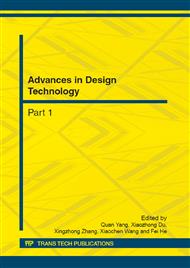p.1197
p.1201
p.1205
p.1209
p.1213
p.1219
p.1224
p.1228
p.1232
Modeling and Simulation of Aircraft Nose Landing Gear Emergency Lowering Using Co-Simulation Method
Abstract:
This paper builds dynamical models and hydraulic system models of retraction/lowering of some regional aircraft nose landing gear respectively based on the software LMS VL motion and AMESim. The simulation analysis result was proved to be credible by checking with that of ground test. The peak oil return pressure with the critical damping force can be obtained by analyzing the hydraulic damping characteristic of actuator cylinder during landing gear emergency lowering based on methods of estimation and co-simulation. The results indicate that the damping characteristic of actuator cylinder plays an important role in emergency lowering. Only when the damping force breaks through the critical value, can the landing gear succeed in emergency lowering and being locked. However, the little damping force will result in great impact load while lowering. Thus, damping force should be changed only when emergency lowering.
Info:
Periodical:
Pages:
1213-1218
Citation:
Online since:
November 2012
Authors:
Keywords:
Price:
Сopyright:
© 2012 Trans Tech Publications Ltd. All Rights Reserved
Share:
Citation:


